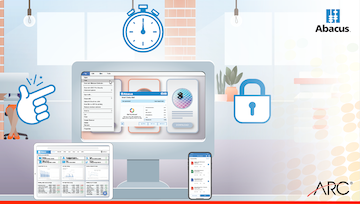
Buying printers is too easy. Ask anyone in your IT department and they’ll tell you it’s true.
Printers multiply like rabbits. They’re all different. Anyone can fix one machine, but no one knows how to fix all of them, and most of your IT department’s helpdesk requests are for…you guessed it, printers. There’s rarely enough of one brand or model to standardize on toner and supplies so you can’t get volume discounts. Staff run all over the office, maybe even to different floors, based on whether they need to use a printer for color, black & white, large or small format, or high or low volume. And as far as security goes, printers are Swiss cheese; they’re full of holes that lead directly to your network.
Basically, your IT department might as well be herding proverbial cats if you haven’t centralized your print infrastructure. But if you can, nearly all of the problems listed above will disappear thanks to four big benefits.
Hardware
Centralizing your print infrastructure means developing consistency across the fleet, and dramatically reduces the number of printers you need. It’s not uncommon to achieve 80% fewer devices on the network. That doesn’t mean you reduce your print capacity, but rather you’ll balance need and utility with a sharp eye for efficiency.
Software
Centralizing print queues and printer driver management with solid print management software will dramatically reduce the time, labor, and costs your IT department pours into managing print assets. With fleet management features that eliminate bottlenecks, impose rule-based printing, and offer print retrieval from any device no matter where or from whom the print request originates, suddenly managing print becomes reasonable again. Maybe even (dare we say it?) easy.
Workflows
Centralized print infrastructure means you can reduce the number of ways a job gets done; it simplifies things for everyone, including users. If your staff knows how to retrieve a job from one printer – say, for example, with a swipe of an ID badge – they can retrieve a print from any other device with a card reader. No one is standing at the printer scratching their head while the line for other print jobs gets longer and longer. People know what to do, so they don’t need to ask so many questions, which frees up IT staff to do things that are more important for your business.
Network Protection
When you consolidate control over the print network, you’ll cover every chink in your armor. Vulnerabilities in printers might not be on the top of your hit list, but when an IP address or network access is exposed on a printer, it’s just not that hard to get at the data on your entire network. With a good centralization strategy and the right tools, you can create additional layers of encryption and security around your company’s digital assets without disrupting hardware, software, or workflows.
These four big benefits sound good, right?
Of course, they do, but are you ready to tackle a project that sounds as big as “centralizing your print infrastructure?” If you’re responsible for IT management, there’s a lot on your plate.
Here’s a bonus reason to consider taking this step right now. ARC can help. We run print infrastructure for a living, and we do it in nearly 150 of our own service centers around the country, and in thousands of our customers’ offices all over the world. We know this stuff backward and forwards, and there’s not a single office printer we haven’t seen, taken apart, put back together, and made work better by installing Abacus, our print management software.
Give us a call – 833-272-8880. We’ll come out and help you assess what’s needed, take a look at the current status of your infrastructure, review your network latency issues if you have multiple locations, and audit your equipment fleet, among a host of other things to help you and your IT team make print add more value to your business.